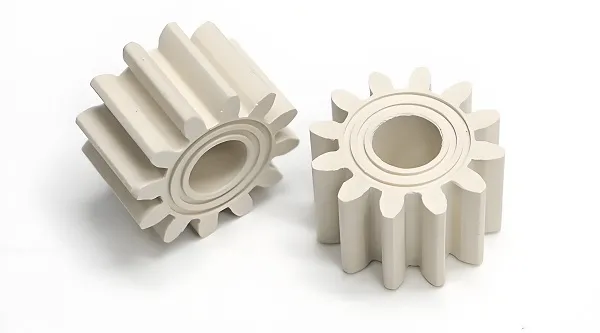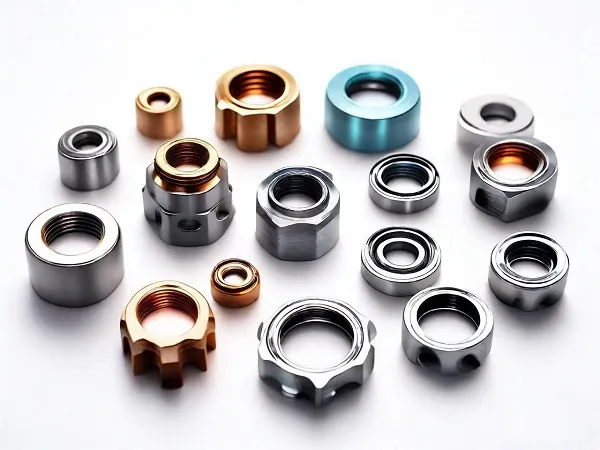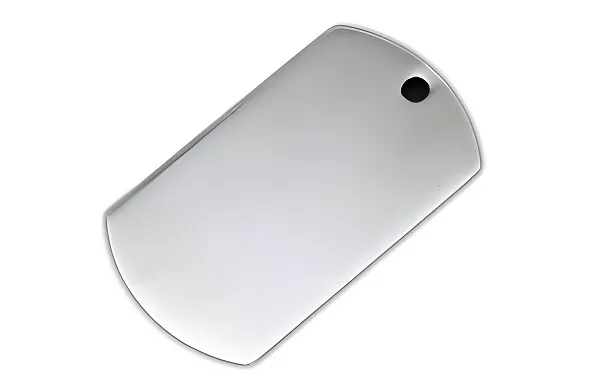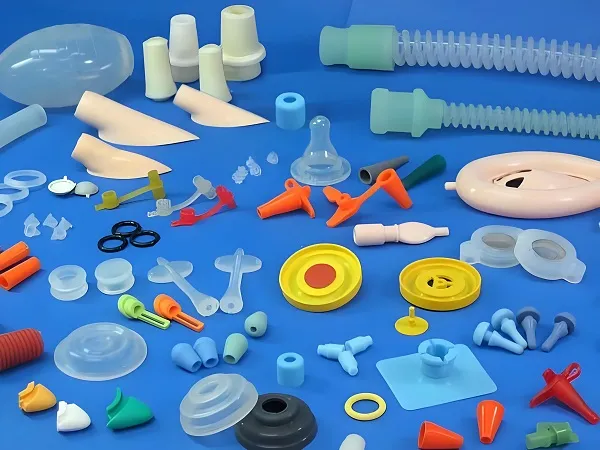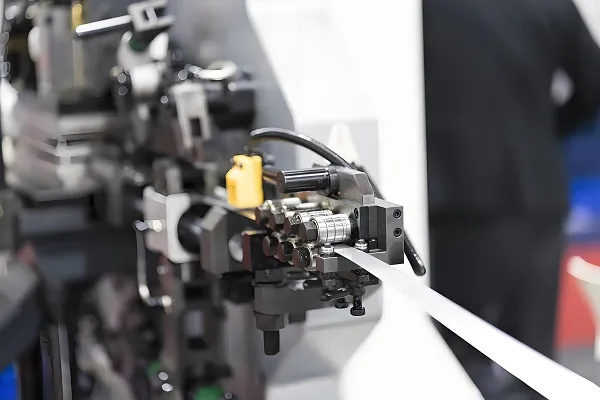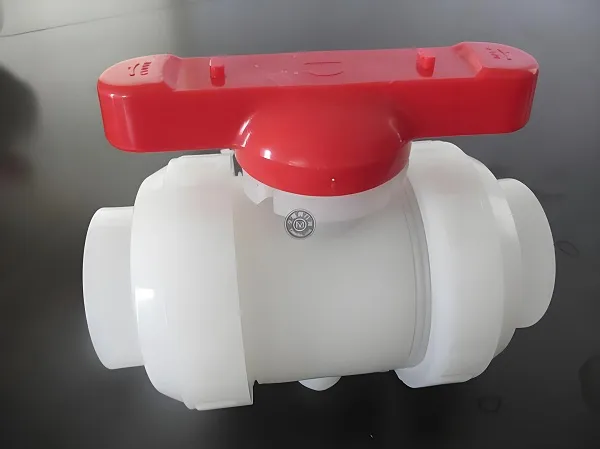Core Cognition: Machined Parts—More Than “Cut Metal”
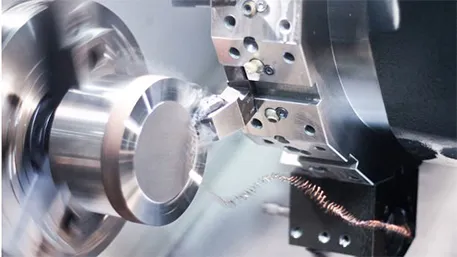
Core Traits of Machined Parts: What Makes Them Unique
1. Tight Precision (Tolerance You Can Measure in Microns)
- Definition: Machined parts meet ultra-strict size and shape limits (called “tolerances”), often as small as 0.001mm (1 micron—about 1/100 the width of a human hair). This isn’t just “perfection for perfection’s sake”; it’s about fit. A gear with a 0.01mm tolerance mismatch won’t mesh with its partner; a valve stem with too much play will leak.
- Real-World Example: I once machined a titanium aerospace pin with a tolerance of ±0.002mm. The client tested it by sliding it into a matching hole—if it required more than 50g of force to insert, it was rejected. Every pin we made passed.
- Craftsman’s Insight: “Precision isn’t about buying expensive machines—it’s about respecting the numbers. I once rushed a batch of aluminum brackets, cutting corners on tolerance checks. Half of them didn’t fit the client’s assembly. Now, I measure every critical dimension with a micrometer—twice. It takes extra time, but it’s worth it to keep their trust.”
2. Material Versatility (From Aluminum to Titanium to Plastic)
- Definition: Machining works with nearly any solid material, as long as it’s rigid enough to hold shape during cutting. This flexibility lets machined parts adapt to harsh environments (e.g., stainless steel for marine parts) or lightweight needs (e.g., carbon fiber for drones).
- Common Material Types & Uses:
|
Material
|
Key Trait
|
Machined Part Example
|
|
Aluminum (6061/7075)
|
Lightweight, easy to cut
|
Smartphone frames, car door brackets
|
|
Steel (4140/304)
|
Strong, corrosion-resistant
|
Engine crankshafts, industrial valves
|
|
Titanium (Ti-6Al-4V)
|
Biocompatible, high strength-to-weight
|
Medical hip implants, aerospace turbine blades
|
|
Plastic (PEEK/ABS)
|
Low cost, chemical-resistant
|
Medical device housings, electronics enclosures
|
- Craftsman’s Insight: “Each material has a ‘personality.’ Aluminum cuts like butter but bends easily—you need sharp tools and low cutting force. Titanium is tough—you need slow speeds and high coolant flow. I once tried machining titanium with aluminum parameters—ruined a $200 end mill in 5 minutes. Lesson learned: Respect the material.”
3. Functional Diversity (From Simple Shafts to Complex 3D Shapes)
- Definition: Machining can create nearly any shape: simple cylindrical shafts (turned on a lathe), complex 3D contours (milled on a 5-axis machine), or tiny micro-holes (drilled with a high-speed spindle). This means machined parts serve every function: structural (brackets), gears, sealing (valve seats), or sensing (sensor mounts).
- Complex Example: A 5-axis mill can machine a turbine blade with curved surfaces that change angle every millimeters—something no other process can match. I made one last year for a small aircraft: the blade’s leading edge was just 0.5mm thick, yet had to withstand 500km/h airflow.
- Craftsman’s Insight: “The best machined parts look ‘simple’ but are secretly complex. A door hinge pin might seem basic, but it needs a smooth surface to avoid squeaking, a precise diameter to fit the hinge, and a chamfered end to slide in easily. Every detail matters.”
4. Consistency (1000 Parts, 1000 Identical Results)
- Definition: Unlike manual machining (where each part varies slightly), modern CNC machining produces identical parts batch after batch. A good shop can hold a tolerance of ±0.005mm across 10,000 parts—critical for mass production (e.g., 100,000 car door handles).
- Data Point: The automotive industry requires “zero defect” machined parts—rejection rates must be <0.1%. We once ran a batch of 50,000 aluminum sensor brackets; only 43 were rejected (0.086% rate).
- Craftsman’s Insight: “Consistency is about process, not luck. We use the same tool for every part in a batch, calibrate the machine at the start of each shift, and check every 100th part. It’s boring work, but when the client says ‘all parts fit perfectly,’ it’s worth it.”
Key Machining Processes That Create Machined Parts
1. Turning (For Rotational Parts—The “Potter’s Wheel” of Machining)
- How It Works: The raw stock spins (on a lathe), and a stationary tool cuts it into cylindrical shapes: shafts, bolts, bushings, or bearing rings. It’s ideal for parts with rotational symmetry.
- Example: A car’s crankshaft (a long, cylindrical shaft with offset “throws”) is turned on a CNC lathe. The lathe spins the steel stock while tools cut the main journal (central cylinder) and throws (offset cylinders).
- Craftsman’s Insight: “Turning is all about balance. If the stock spins too fast, it vibrates and makes the part oval. If the tool is dull, it leaves a rough surface. I once turned a batch of stainless steel bolts at 3000r/min—they came out oval. Slowed to 2000r/min, and they were perfect.”
2. Milling (For Irregular Shapes—The “Sculptor’s Chisel”)
- How It Works: A rotating tool (end mill) cuts a stationary workpiece into non-cylindrical shapes: brackets, gears, pockets, or slots. 3-axis mills handle simple shapes; 5-axis mills tackle complex, multi-angle parts.
- Example: A smartphone’s camera bracket (a small, L-shaped aluminum part with a hole for the lens) is milled. The mill uses an end mill to cut the L-shape, then a drill to make the lens hole.
- Craftsman’s Insight: “Milling is like 3D drawing with a tool. I once milled a custom aluminum bracket for a robot—its shape had curves, slots, and a 45° angle. The 5-axis mill let me cut every side in one setup—no re-clamping, no deviation. The robot builder said it ‘fit like a glove.’”
3. Drilling & Tapping (For Holes & Threads—The “Plumber’s Tools”)
- How It Works: Drilling creates cylindrical holes (using twist drills); tapping cuts internal threads in holes (using tap tools). These are often final steps—adding holes for bolts or threads for screws.
- Example: A kitchen faucet’s mounting plate (stainless steel) is drilled with 4 holes, then tapped to accept M6 screws. Without drilled/tapped holes, the faucet can’t attach to the sink.
- Craftsman’s Insight: “Drilling is easy to mess up. A dull drill makes a oversized hole; too much feed rate breaks the drill. I once drilled 100 plastic housings with a dull drill—all holes were 0.1mm too big. Had to rework each one with a larger tap. Now, I change drills every 500 holes—no more mistakes.”
4. Grinding (For Ultra-Smooth Surfaces—The “Polisher’s Wheel”)
- How It Works: A rotating abrasive wheel grinds away tiny amounts of material to create ultra-smooth surfaces (Ra≤0.1μm) or tight tolerances (±0.001mm). It’s used for parts that need to slide, seal, or fit perfectly.
- Example: A car’s brake rotor (cast iron) is ground to a smooth surface. If the rotor is rough, the brake pad will wear unevenly and make noise.
- Craftsman’s Insight: “Grinding is the ‘final polish’ of machining. I grind medical implant surfaces—they need to be so smooth, they don’t irritate tissue. I once spent 2 hours grinding a titanium hip cup to Ra=0.05μm. The surgeon said it ‘integrated with the bone faster than any other implant.’ That’s the reward of grinding.”
Critical Applications: Where Machined Parts Shine
1. Automotive Industry (The “Mass-Production Leader”)
- Key Machined Parts: Crankshafts, camshafts, brake rotors, sensor brackets, transmission gears.
- Why Machining?: Cars need 1000+ parts that fit perfectly and withstand vibration, heat, and wear. Machining delivers consistency (100,000 identical crankshafts) and strength (steel gears that last 200,000km).
- Craftsman’s Insight: “I make aluminum sensor brackets for electric cars. The bracket holds a temperature sensor—if it’s off by 0.01mm, the sensor misreads the temperature and the car’s battery overheats. Machining is the only way to get that precision at scale.”
2. Aerospace Industry (The “Precision Pioneer”)
- Key Machined Parts: Turbine blades, wing brackets, landing gear components, avionics housings.
- Why Machining?: Aerospace parts need to be lightweight (titanium, carbon fiber) yet strong enough to withstand 30,000ft pressure and 600℃ engine heat. Machining creates complex shapes (turbine blades) with zero defects.
- Data Point: 92% of aerospace structural parts are machined—3D printing is used for prototypes, but not for critical flight parts (Source: Aerospace Manufacturing Trends 2025).
3. Medical Industry (The “Life-Saver”)
- Key Machined Parts: Hip/knee implants (titanium), surgical tools (stainless steel), insulin pump housings (PEEK plastic).
- Why Machining?: Medical parts need biocompatibility (no toxic materials), ultra-smooth surfaces (no tissue irritation), and tight tolerances (implants that fit bone perfectly). Machining meets all three.
- Craftsman’s Insight: “I machined a titanium knee implant last year. The surface had to be Ra=0.2μm—so smooth, you couldn’t see scratches under a 10× magnifier. The patient’s doctor said the implant ‘healed without complications.’ That’s when machining feels like more than a job—it feels like helping people.”
4. Electronics Industry (The “Miniaturization Expert”)
- Key Machined Parts: Smartphone camera brackets (aluminum), laptop hinge pins (brass), circuit board heatsinks (copper).
- Why Machining?: Electronics need tiny, lightweight parts that fit in tight spaces (e.g., a 5mm camera bracket in a smartphone). Machining creates micro-parts with tolerances of ±0.003mm—smaller than a grain of sand.
- Example: A laptop’s hinge pin (φ2mm, brass) is turned on a micro-lathe. If the pin is 0.005mm too big, the hinge won’t open smoothly; too small, it will wiggle.
Common Misconceptions: What People Get Wrong About Machined Parts
1. “Machined parts are all made of metal.”
- Reality: While metal is common, plastics (PEEK, ABS), composites (carbon fiber), and even wood can be machined. I make PEEK plastic housings for medical devices—they’re lightweight, chemical-resistant, and easier to machine than titanium for small parts.
- Fix: Think “subtractive process,” not “metal.” If a material can hold shape while being cut, it can be machined.
2. “3D printing will replace machining.”
- Reality: 3D printing is great for prototypes, complex shapes with internal cavities, or small batches (1-100 parts). But for mass production (1000+ parts), precision (±0.001mm), or strength (steel gears), machining is still faster, cheaper, and more reliable. For example, 3D printing a steel crankshaft takes 8 hours; machining one takes 15 minutes.
- Craftsman’s Insight: “I use 3D printing for prototypes—if the prototype fits, I machine the final batch. 3D printing is a tool, not a replacement. It helps me test ideas faster, but machining makes the parts that actually go into products.”
3. “The tighter the tolerance, the better the part.”
- Reality: “Tighter” doesn’t mean “better”—it means “more expensive.” A garden hose fitting only needs a tolerance of ±0.1mm; a medical implant needs ±0.001mm. Over-engineering a part with unnecessary precision wastes money. I once had a client ask for a ±0.001mm tolerance on a plastic bracket—we could do it, but it added 40% to the cost. They switched to ±0.01mm, and the bracket worked perfectly.
- Fix: Ask: “What does this part need to do?” Tolerance should match function, not ego.
Q&A: Wisdom from the Shop Floor
Q1: “How do I choose the right material for my machined part?”
- My Answer: Ask three questions:
-
- What environment will it be in? (Wet? Hot? Use stainless steel or PEEK.)
-
- What load will it carry? (Heavy? Use steel or titanium; light? Use aluminum.)
-
- What’s your budget? (Titanium is expensive; aluminum or plastic is cheaper.)
Q2: “I need 50 custom parts—should I machine them or 3D print?”
- My Answer: Machining is better for 50 parts—especially if they’re metal or need precision. 3D printing 50 aluminum brackets takes 20 hours; machining them takes 2 hours. Plus, machined parts are stronger and more consistent. Only 3D print if the part has a complex internal cavity (e.g., a hollow bracket with ribs) that machining can’t reach.
Q3: “What’s the biggest mistake new machinists make?”
- My Answer: Rushing. They skip measuring, use dull tools, or ignore material parameters. I once saw a new machinist try to cut titanium at aluminum speeds—he broke three tools in 10 minutes. Slow down: measure twice, choose the right tool, and respect the material. Precision takes time, but it’s faster than reworking scrap.
Q4: “How can I tell if a machined part is high-quality?”
- My Answer: Check three things:
-
- Tolerance: Use a caliper or micrometer—does it match the drawing?
-
- Surface Finish: Run your finger over it—no burrs, scratches, or rough spots.
-
- Function: Does it fit its mating part? A high-quality part doesn’t just meet specs—it works.

